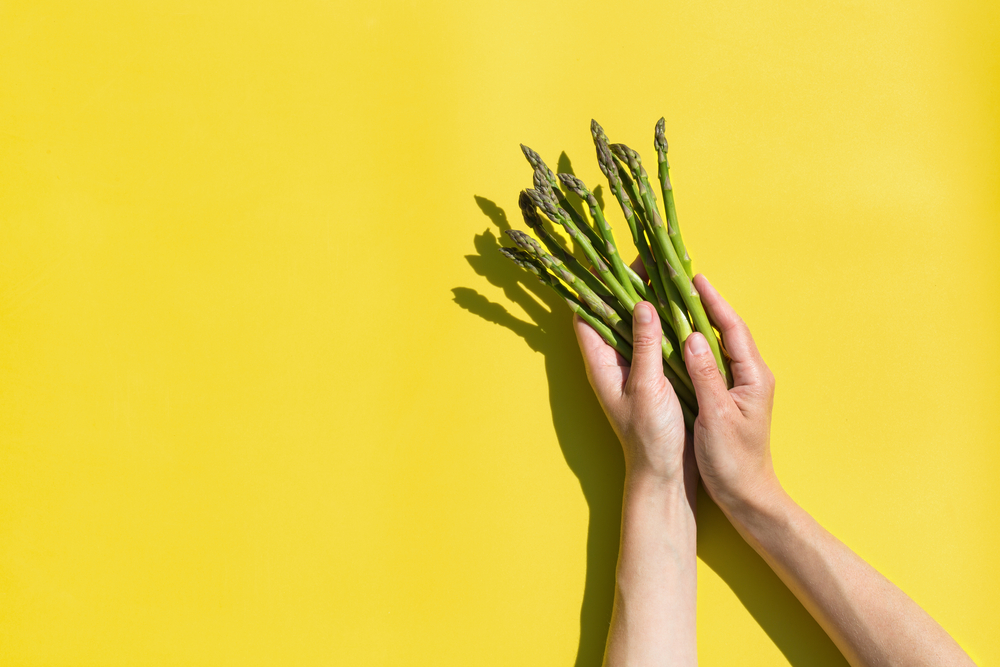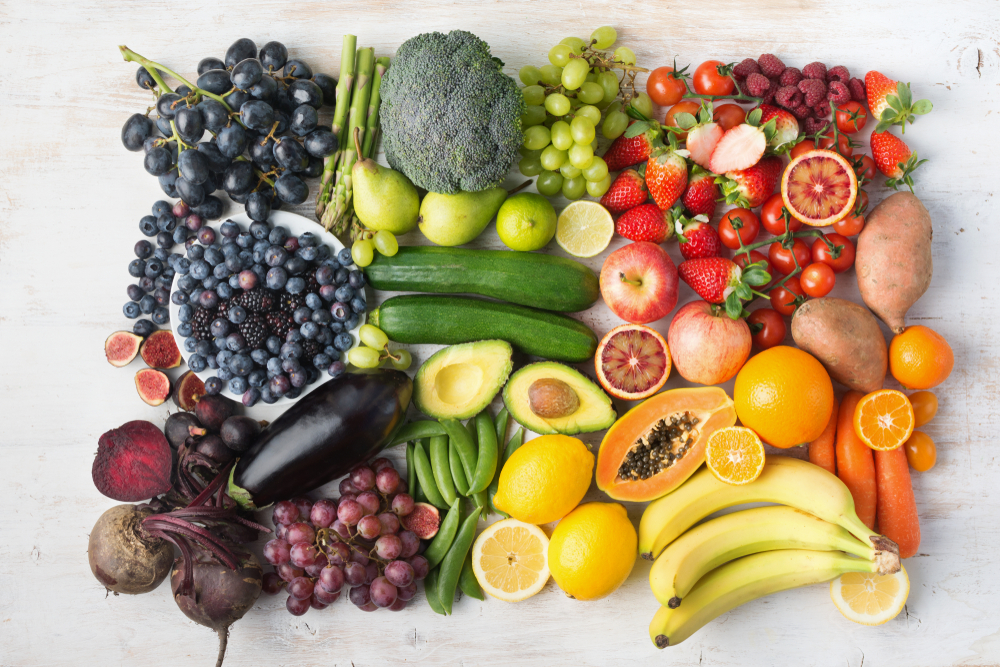
It is English Asparagus season again and a time to celebrate! We know that all fruits and veggies taste better when in season, but English asparagus outshines all its competitors because its taste is simply like no other when fresh and local.
Imported asparagus in the shops year-round can sometimes be tasteless and often has a woody texture but there is nothing like fresh English!
Clinical Nutritionist Suzie Sawyer shares the wonders of asparagus. But hurry, as the season is short and traditionally ends on the Summer Solstice!
A nutritional powerhouse
Asparagus really packs a punch when it comes to nutritional content. Asparagus is loaded with vitamin C, which is essential for a healthy immune system, energy and, importantly, it’s one of our key antioxidant nutrients. This means it can help protect the body from free radical damage, partly responsible for the ageing process.

Additionally, it’s rich in vitamin K, which we need for our bones and healthy blood, the B-vitamins for energy, and fibre to help keep the digestive system in good working order. Importantly, asparagus is rich in glutathione which helps the liver to detoxify; it’s been found to be a great hangover remedy. Furthermore, this little gem helps feed the beneficial bacteria in the gut which is essential for all body systems to work correctly. It’s certainly impressive in the nutritional stakes.
What else is it good for?
Most people notice a rather unpleasant smell in their urine after eating asparagus! However, this isn’t all bad; it’s down to the asparagusic acid in asparagus which is a sulphur compound that not only helps the liver but is great for the skin too. Conditions such as eczema, psoriasis or rosacea may all benefit from a diet rich in asparagus.

Another little-known fact is that asparagus is a natural diuretic, so it can help if you’re suffering from any kind of water retention. This also works as part of the body’s natural detoxification processes. And interestingly, people often eat lots of asparagus as part of an effective weight loss plan. It’s certainly a win-win with asparagus
How to cook it
There’s not much you can’t do with asparagus. It can be steamed, boiled, barbecued, roasted or grilled and works with a wealth of other foods.

Asparagus can be simply roasted with a little olive oil and sprinkled with shaved Parmesan as a perfect vegetable side, or with some cubed feta and chopped walnuts. It works with any form of pasta dish, especially with garlic prawns and spaghetti. Or try it freshly steamed and added to a salad or roasted on top of cheese on toast.

Why not start the day with a protein and detox punch? Asparagus works really well lightly steamed with eggs (think about runny eggs for dipping) or roasted with a poached egg on top. Eggs are high in protein, containing all the essential amino acids, but also help with liver detoxification as they’re high in sulphur too. Certainly, a powerful hangover recipe.

Soups are brilliant because they retain all the nutrients when the ingredients are cooked. Asparagus soup is a nutritional winner when made using fried garlic, shallots, spinach and vegetable stock. Garlic and shallots are brilliant for feeding the good gut bacteria, and spinach is loaded with energising folate, iron, and bone-loving calcium. Even better, it’s really quick to make and will easily keep in the fridge.
So why not pick up some English asparagus today and enjoy this delicious vegetable at its best.
FOR MORE GREAT NUTRITION AND LIFESTYLE ADVICE:
Sign up to receive our blog and get a weekly dose of the latest nutrition, health and wellness advice direct to your inbox.
Follow us on Instagram @feelaliveuk for nutrition, lifestyle and well-being tips.
Visit us at www.feelaliveuk.com for the latest offers and exclusive Alive! content.
Follow and Chat with Suzie on Twitter @nutritionsuzie
For everything you need to know about vitamins, minerals and herbs visit our sister site Herbfacts
All images: Shutterstock



















 This dish is also really easy to prepare simply by boiling up both vegetables (the parsnips will need slightly longer cooking). When tender, then mash with some cream, salt and pepper and all-important nutmeg. Not only does nutmeg really add some sparkle to a dish when used in this way but, just like any spices, it has many health benefits namely for the immunity, liver detoxification and cognitive function. The parsnips and celeriac can then be put into a dish and covered with homemade breadcrumbs, sprinkled with Parmesan, and roasted in the oven. Delicious and healthy!
This dish is also really easy to prepare simply by boiling up both vegetables (the parsnips will need slightly longer cooking). When tender, then mash with some cream, salt and pepper and all-important nutmeg. Not only does nutmeg really add some sparkle to a dish when used in this way but, just like any spices, it has many health benefits namely for the immunity, liver detoxification and cognitive function. The parsnips and celeriac can then be put into a dish and covered with homemade breadcrumbs, sprinkled with Parmesan, and roasted in the oven. Delicious and healthy! This recipe is a traditional brownie dish but using small muffin cases. Use flour, beaten eggs, sugar and dark chocolate as per a normal brownie recipe. Also include some cocoa powder. Interestingly, cocoa has many health benefits; it’s very high in antioxidants and has also been found to reduce blood pressure. Incidentally, if you or your friends and family can’t resist a full-blown Easter egg, then choose a dark chocolate rather than milk chocolate one so you get some real health benefits too.
This recipe is a traditional brownie dish but using small muffin cases. Use flour, beaten eggs, sugar and dark chocolate as per a normal brownie recipe. Also include some cocoa powder. Interestingly, cocoa has many health benefits; it’s very high in antioxidants and has also been found to reduce blood pressure. Incidentally, if you or your friends and family can’t resist a full-blown Easter egg, then choose a dark chocolate rather than milk chocolate one so you get some real health benefits too.